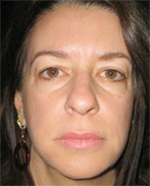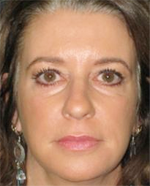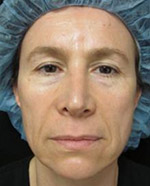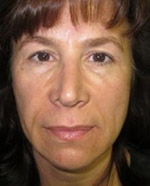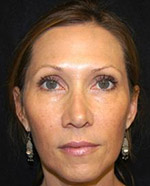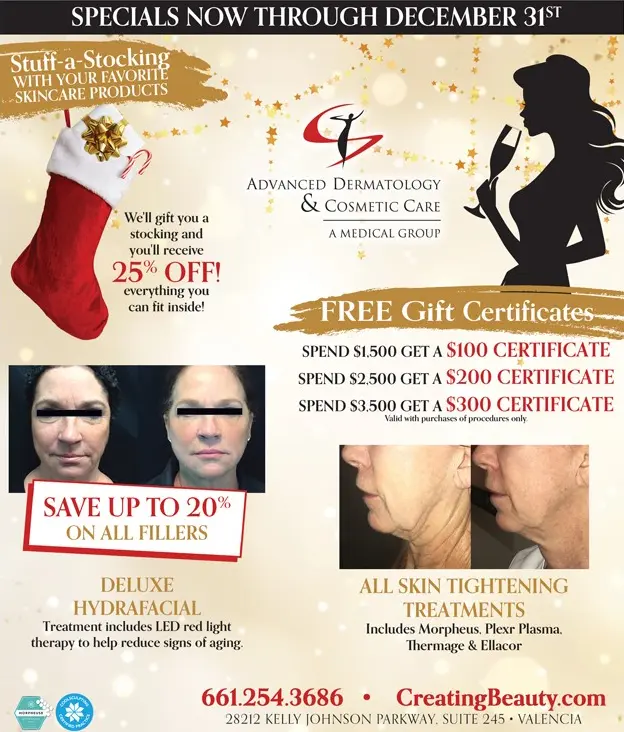Blog
Botox vs Dysport (you now have a choice)
Posted on October 12th, 2011The word Botox is now a part of our common vocabulary, but just like Kleenex and Xerox, it is a brand name. And now in the USA, there is finally some competition in the “Neurotoxin” category. The product is called Dysport. Here are some basic differences:
Botox and Dysport have similar mechanisms of action (blocking nerve impulses).
Dysport is no stronger nor more effective than Botox and vice-versa.
The duration of effect (how long it lasts) is similar. The Dysport literature will state it lasts up to four months, Botox says three to four months.
One unit of Botox does not equal one unit of Dysport, so be careful when looking at unit pricing. In our office we price by the area, so we can get proper correction on all patients for a set fee.
In clinical studies, author’s noted that Dysport “spreads more” during injection. This can be a good and bad thing. In large areas, such as the forehead or armpits, fewer injections would be needed due to the spreading. Meaning less discomfort, swelling and bruising. It could be bad in that unless the injector is experienced with a good understanding of more complex musculature (around the eyes, between the eyebrows), the Dysport could spread into unwanted areas causing untoward side effects (droopy eyebrows).
We use both products in our office. What we have seen so far:
Many patients feel Dysport starts working sooner. Approximately 2-3 days after injection vs. about 5-7 days with Botox.
We have not seen any “spreading” problems with Dysport, but we are very careful and choosy about placement.
As with all new products and treatments, we are constantly searching out the best. Ultimately I think we will continue to use both products. As a matter of fact, we sometimes use both products on the same patient because of the slight nuances.
For more information, contact Advanced Dermatology & Cosmetic Care at 661-254-3686 or visit www.CreatingBeauty.com.
Antioxidants: What you should know
Posted on October 12th, 2011By Bernard I. Raskin, M.D.
Ultraviolet light causes many forms of damage to your skin cells. The ultraviolet light rays cause breaks in your DNA which often results in cancer years later. Ultraviolet light smashes into cell proteins causing atomic particles to shoot off at high speeds and smash into other proteins and break them apart into other particles that continue to cause damage. So even a small amount of ultraviolet light can result in a large amount of damage to the proteins your cells need for normal function—kind of like an earthquake causing a tsunami.
Antioxidants are chemicals that protect cells by neutralizing external forces (such as damage from the sun or pollution) and internal factors (for example ingested toxins). They work by capturing the high speed particles before those particles can smash into important structures, almost like a hockey net stopping a speeding hockey puck. There are many antioxidants available but some of the strongest antioxidants are Vitamins C, E, green tea, and Ferulic Acid. Antioxidants for your skin work best when applied directly to the skin rather than as dietary supplements. These agents assist in skin repair and the strengthening of blood vessels.
Vitamin C is also known as ascorbic acid and its active form is called L- Ascorbate. Vitamin C stimulates collagen production, assists to break up pigmentation and contributes to faster wound healing. Vitamin C also helps reduce skin redness. Vitamin C, combined with UVA/UVB sunscreen or sunblock, gives superior sun protection that is better than either preparation alone.
Vitamin E is also known as Alpha-tocopherol. Vitamin E provides significant protection against skin redness and protects skin cells from self destructing due to sunburn and the oxidative effects of UV exposure.
Green tea antioxidants are known as EGCG or by its spelling bee name of epigallocatechin gallate. Studies suggest that EGCG have anti-inflammatory and anti-cancer properties that may help prevent the onset and growth of skin tumors. Topical application of EGCG importantly may prevent UV induced immunosuppression and precancerous cell changes after UV exposure. EGCG is respected for its ability to reduce, eliminate and neutralize free radicals and the damage they cause. Many scientific studies and scholarly articles have concluded that green tea topically applied to the skin offers substantial benefits and may impact the development of skin cancer.
Ferulic acid (FA) is an extremely potent antioxidant found in the seeds and leaves of most plants, especially in the brans of grasses such as wheat, rice and oats. Plants can be significantly affected by ultraviolet light. I suppose if you are a tree, you create your own shade which might be why trees aren’t sources of ferrulic. But many of the strongest antioxidants used today come from the plant world. Exposure to ultraviolet light actually increases the antioxidant potency of ferulic acid.
Sagging, wrinkled skin is something we can see from the outside, but aging occurs from the inside out. Not only is skin health at risk, but all tissue in the body begins to deteriorate over time. Using antioxidants along with proper sun protection may over time significantly reduce the signs of aging and skin damage we accumulate throughout our lives.
For more information contact Advanced Dermatology & Cosmetic Care at 661.254.3686 or visit www.CreatingBeauty.com
Understanding Acne
Posted on October 12th, 2011By Bernard I. Raskin, M.D.
More than 80% of us at some point in our lives will be affected by acne. To better treat acne first we have to understand acne.
Acne is caused by infected oil glands. Normally the oil glands provide necessary moisture to the outer layer of the skin by covering the skin with a fine layer of oil called sebum, but when this oil becomes too thick and sticky, it cannot be efficiently discharged through the pores. When this occurs the sebum begins to accumulate under the skin at the base of the hair follicle where it hardens restricting the natural flow of oil. This hardened sebum is a great place for bacteria to accumulate causing an infection. The hardening of the sebum is often caused by normal hormone level variations as occurs in teenagers and with menstrual cycle changes.
Acne can appear in different forms and severity. Whiteheads are deeper and completely enclosed under the opening of the pore and the surrounding skin is not inflamed. There are also papules, which are small and inflamed but lack the “head” that characterizes whiteheads. Pustules are large red and inflamed bumps capped by a crown of whitish pus protruding from the opening of the pore. Blackheads usually result if the pores’ opening is somewhat larger and is almost entirely confined to the pore itself without surrounding redness. Deep subsurface blockages can create cysts which are usually larger, more tender, and more difficult to treat than any other kind of acne.
Treatments for acne are determined by the severity or grade of the acne. Grade 1 is the mildest type of acne consisting of non-inflamed whiteheads and blackheads.
Grade 2 acne is the most common type of acne experienced by most teenagers. These outbreaks usually consist of whiteheads and blackheads as well as minimally inflamed papules and pustules.
Grade 3 acne is regarded as severe exhibiting not only whiteheads and blackheads but also deep, inflamed papules and pustules as well.
Grade 4 acne is the most severe form of outbreak and is technically known as cystic acne. It is characterized by deeply embedded cysts and large pustules.
New and exciting treatments for acne are being developed all the time, including a new prescription topical medication that is so effective many patients will no longer need to take oral medications.
For more information contact Advanced Dermatology & Cosmetic Care at 661.254.3686 or visit www.CreatingBeauty.com
Winter skin care
Posted on October 12th, 2011Many don’t realize that as we are enjoying the summer sun, we are damaging our skin, causing brown spots, fine lines, and roughness. As summer ends we often notice our skin appears blotchy, spotted and dry. Winter is the time to work on improving damaged skin. There are many options ranging from mild peels to aggressive lasers. The more aggressive the treatment, the greater the result we can expect.
One option to deal with these conditions is to resurface your skin. By removing the older top layers of skin, a newer, younger looking skin is revealed. For example, a series of light chemical peels will address fine lines and brown spots. We offer a package which includes 3 Vitalize Peels and a prescription skin care regimen for $580.
A slightly more aggressive approach is a mild laser resurfacing treatment. This laser can etch away fine lines and create a smooth, new surface. We are currently offering a special which includes 3 lasers and Skin Medica TNS recovery complex to aid in healing and build collagen for $1,250.
A much more aggressive treatment is the Fractionated C02 laser which helps improve wrinkles, lines, texture, roughness, and pigment. This laser starts at $1500.
Winter is the perfect time to do laser treatments due to less sun exposure. Call for a consultation to find the treatment that’s right for you so your skin will be bright and radiant by spring!
For more information please contact Advanced Dermatology & Cosmetic Care at 661.254.3686 or visit www.CreatingBeauty.com.
What is fractionated laser?
Posted on October 12th, 2011By Bernard I Raskin, M.D.
When microdermabrasion, chemical peels, or photofacials aren’t giving you the results you want, your answer may be fractional laser treatment. What is fractional laser? Years ago the gold standard of treatment was traditional laser resurfacing done with a Carbon Dioxide (C02) laser. While this laser provided outstanding results, it also had a long period of recovery that included bandages, crusting, prolonged redness, and swelling. Then less invasive resurfacing lasers evolved such as the Erbium. While these lasers provide very good results for skin smoothing, texture, wrinkles and pigment, the results were not as dramatic and didn’t provide skin tightening like the C02. So “fractionated” CO2 technology was developed. What this means is that the laser light is broken up into tiny separate dots which then penetrate the skin in this “fractionated” pattern. Spaces of untreated areas are left between the dots of laser light which makes healing faster and easier. Turns out this new dotted pattern gives almost the same result (and in some cases better) than older systems with a much faster and easier recovery. This fractionated CO2 pattern has many variables that influence results and determine how many treatments are needed. For example, how close the dots are to each other, how big the dots are, how many dots to make, how deep do they go. Because of these variables, it’s best to go to an office that is highly experienced with lasers. There are also several types of lasers making this fractionated pattern and some require multiple treatments to achieve significant results which can mean higher costs. In our office, we have chosen the QuadraLase (C02), because of superior results with the fewest treatments in enhancing skin tone and texture, reducing the effects of the sun and aging on the skin, smoothing lines and wrinkles, skin tightening and improving acne scars. Treatments range from mild to aggressive based on the extent of the rejuvenation you are looking for. All lasers can have complications and experienced laser surgeons have the education and experience to reduce risks, so be very careful whom you choose to laser your face and/or body. This is a medical procedure and just because a facility advertises a laser doesn’t attest to level of experience in its use. If someone other than the physician is performing the laser, we recommend checking on the physician supervision. Restorative lasers can be amazingly beneficial with superb results and minimal downtime. The new fractionated CO2 lasers are awe inspiring technology.
For more information please contact Advanced Dermatology & Cosmetic Care at 661.254.3686 or visit www.CreatingBeauty.com.
We can fix that!
Posted on October 12th, 2011By Bernard I Raskin, M.D.
Just about everyone has experienced an acne breakout, and most people know that a dermatologist can prescribe medications to combat this problem. But are you aware of the many skin issues that can be easily treated by your dermatologist? Below are some common skin disorders and their treatments.
A dull lifeless complexion can age you beyond your years. This can be easily treated with a combination of products and esthetician services. Retinol is an essential part of a successful anti-aging program. Retinol helps stimulate new collagen to form. This thickens the skin and helps erase wrinkles. Retinol also helps the surface cells function better by removing the dull quality so the skin appears brighter.
Esthetician services work hand in hand with your product regimen. A bi-monthly Microdermabrasion will help exfoliate away the dead skin cells and stimulate blood flow and collagen production in the skin. Try a chemical peel to promote healthy, youthful and smoother looking skin.
Another common skin problem is redness; whether it is diffused all over the face, a specific red spot, or broken blood vessels, this common condition can be treated easily with little to no downtime. Using a specially designed light, the V Beam Laser targets the affected area, increasing the temperature of the red blood cells in the vessel, causing the vessel wall to close.
Brown pigment in the skin can create a mottled or discolored appearance to the skin. This brown discoloration can be treated in a number of different ways. The least invasive treatment would be a topical lightening cream. This cream can be used alone or in conjunction with another treatment such as IPL. IPL therapy consists of a series of 4 to 6 treatments, in which an intense flash of light is emitted similar to the flash of a camera. IPL passes through the top layer of skin (epidermis) and penetrates to the deeper layer (dermis) where blood vessels, pigment cells, and collagen are found. IPL treatments of freckles or brown spots usually require no downtime, and you can return to normal daily activities immediately. Over a 2 to 3 week period after treatment, brown spots or freckles will flake off.
These are just a few of the most common skin troubles we are faced with but that are easily treatable. See your dermatologist today for more information and expert guidance.
For more information contact Advanced Dermatology & Cosmetic Care at 661.254.3686 or visit www.CreatingBeauty.com
The Vitamin D Dilemma—The Good and Bad of Sunlight
Posted on October 12th, 2011By Bernard I Raskin, M.D.
Recently controversy emerged about whether sun exposure is necessary for creating Vitamin D. Vitamin D is naturally produced in the body by Ultraviolet sun light exposure. Vitamin D is necessary for your health and may prevent prostate, colon, breast, and other cancers. Vitamin D is essential for bone health, immune system functioning, and more. Just 5-10 minutes of UV (ultraviolet) exposure from the sun two to three times a week over a small area of skin is sufficient for most Caucasians to create vitamin D. Further exposure actually destroys the vitamin, decreasing Vitamin D levels. Keep in mind that even when you wear a high SPF sunscreen, some UV reaches the skin, and this may be plenty for fair-skinned individuals.
But sometimes the cure can be worse than the condition. All unprotected UV exposure contributes to cumulative skin damage, accelerating aging and increasing our lifetime risk of skin cancer. UV is an officially recognized environmental carcinogen. There are about 2 million skin cancers diagnosed yearly in the United States mostly caused by sun exposure. Sun exposure also causes wrinkles, brown spots, leathering and sagging.
You can obtain Vitamin D largely from food or supplements while following a skin cancer prevention program. There are effective almost effortless alternatives to sun exposure for achieving adequate Vitamin D. A diet containing Vitamin D fortified orange juice or milk is helpful. Salmon and other fatty fish naturally contain vitamin D. Or simply taking daily multivitamins containing 600 units of Vitamin D.
So 5-10 minutes is sufficient to produce vitamin D. But skin degeneration begins after just 2 minutes of sun!!! That means permanent destruction of collagen under the skin begins in 2 minutes. Collagen is the supporting framework for your skin—good full collagen keeps the skin from wrinkling. And once that collagen support degenerates, it’s impossible to completely rebuild that framework ever again. Even worse is the collagen destruction that began after 2 minutes of sunlight may continue for hours even though you only had a 2 minute exposure!! The reason is that 2 minutes of UV exposure causes skin cells to release a chemical known as proteinase which grinds away at the collagen structure for hours. Fortunately we have effective methods to reduce proteinase activity, and we suggest you contact your dermatologist for more information on preventive techniques. But remember, 2 minutes is the magic number.
For more information contact Advanced Dermatology & Cosmetic Care at 661.254.3686 or visit www.CreatingBeauty.com
Treating Melasma “THE MASKED BANDIT”
Posted on October 12th, 2011By Bernard I Raskin, M.D.
Melasma shows up as brown spots or splotches on the forehead, cheeks, jaw line or upper lip that is triggered by hormones and light. Hormones stimulate the growth of cells that make brown pigment (melanocytes). And light stimulates the production of even more brown pigment (melanin). Melasma can appear when a woman’s hormones change, whether through pregnancy, oral contraceptives, or hormone replacement therapy after menopause. So you have two problems: too many cells making brown pigment and light constantly stimulating them.
If you get melasma from postmenopausal hormone replacement and can’t stop the HRT for health reasons, then use sunscreen, stay out of the midday sun, and keep your hat on. If you have melasma from hormones or prior pregnancies, see your dermatologist first. Women of color are prone to melasma, and it is a significant problem for many. But people of any skin type can get melasma. Melasma can be difficult to treat. Talk to your dermatologist about prescription “bleaching” creams and other treatments such as Peels and Microdermabrasions. All these simple measures will help to limit the blotchiness of melasma.
Be sure to apply a sunscreen with a SPF fifteen or greater with zinc, every single morning and reapply it frequently. Try using ColoreScience Sunforgetable mineral powder SPF 30 OR 50 for convenient reapplication throughout the day and for use over makeup. You should also wear a hat. You will not have success treating melasma if you don’t block light. Every time ultraviolet light hits these brown spots it makes them worse. Your sunscreen must block UVA as well as UVB rays.
Prescription “bleaching” creams-These creams don’t really “bleach” anything. Instead, they block the production of excess pigment (melanin) in the skin. The pigment-making cells are like little factories that churn out microscopic, brown granules. The bleaching creams partly shut down the factory so less brown pigment granules are made.
Peels and microdermabrasion – Both peels, and microdermabrasion are done in a series, they work by increasing cell turnover. This speeds the transit of that unwanted pigment out of your skin. These treatments are helpful for all types of pigment issues regardless of their origin.
For more please contact Advanced Dermatology & Cosmetic Care at 661.254.3686 or visit www.CreatingBeauty.com.
The Difference between Male & Female Skin
Posted on October 12th, 2011By Bernard I Raskin, M.D.
When it comes to skincare, everyone is not created equal. Both men and women should be concerned with the health and status of their skin, but men also need to be careful as to what types of products they are using and how it will react with their skin. The first step towards proper skincare is to know how male and female skin functions and how they differ.
Because the vast majority of skincare customers are women, it’s no wonder that everyone young and old is aware of how a woman’s skin functions, ages and reacts to various beauty products. But what about male skin? A man’s skin is about 20% thicker than a woman’s and is usually firmer because it is richer in collagen and elastin levels. This is why many men tend to age without as many deep-set wrinkles and fine lines as women, although the success of aging gracefully for any man also lies in how well he has taken care of his skin over the years.
As a result of how the male skin is structured, it may to be more oily and prone to breakouts than female skin. In terms of skincare, deep cleansing is a must for men. By maintaining a daily deep cleansing routine, men can continue to enjoy a clear and healthy complexion. Even though men aren’t as prone to the signs of aging like women are, that doesn’t mean they are completely immune. Men should also incorporate AHA’s and BHA’s (Alpha and Beta Hydroxyls Acids) in to their regimen to help avoid ingrown hair’s caused by shaving.
Despite these differences in male and female skin, it often does not matter what kind of skincare products are used. It is perfectly fine for a man to use a skincare product designed for female skin. At Advanced Dermatology and Cosmetic Care, Dr. Raskin offer’s products that cater to the thicker, oilier and larger pores of a man’s complexion. Please feel free to come in and speak with one of our experienced cosmetic staff members.
For more please contact Advanced Dermatology & Cosmetic Care at 661.254.3686 or visit www.CreatingBeauty.com.
Sun Safety
Posted on October 12th, 2011By Dr. Bernard I Raskin
By now almost everyone has been warned about the damage the sun can cause to your skin. But do you really know how to protect yourself properly? Wearing your sun screen at the beach or pool or on a hot sunny day is a start. But what about all the other times you are exposed to the sun’s harmful rays? UV ray exposure is accumulative, meaning even the small amount of time it takes to walk to your car, drive to school or work, or even sitting near a window, adds up over time.
There are two types of UV rays, UVA and UVB. Both can be harmful to your skin. UVA rays can pass through window glass and penetrate deep into the layers of the skin contributing to premature aging. UVB rays are the primary cause of sunburn; the rays penetrate the outer layer of the skin causing damage to the cells. Both UVA and UVB rays can play a part in the formation of skin cancer.
Don’t think that cloud cover provides you with any protection from the suns UVA rays. UVA penetrates the clouds and continues deep into the skin to cause long-term damage. A higher SPF is recommended to ensure full protection for the entire time you are exposed to the sun. Re-application is always recommended even with a waterproof formula when excessive sweating or water exposure is present.
Don’t skimp when applying your sunscreen. Most people only apply half as much sunscreen as needed, spreading it to thinly and reducing the effectiveness of the product by 50%. The average size adult should be using one full ounce of sunscreen over their entire body. Sunscreen should always be applied at least 45 minutes prior to sun exposure to allow the sunscreen to be fully effective.
Try to avoid sun exposure from 10am until 4pm that is when the suns damaging rays are the strongest. If you have to be outside during this time try and cover up as much exposed skin as possible. A wide brimmed hat, sunglasses, long sleeves and pants are recommended.
Keep an eye out for any changes in your skin, like new spots or changes in existing spots. See your dermatologist annually for a full body check.
For more information contact Advanced Dermatology & Cosmetic Care at 661.254.3686 or visit www.CreatingBeauty.com or MohsSurgeryCenter.org.




